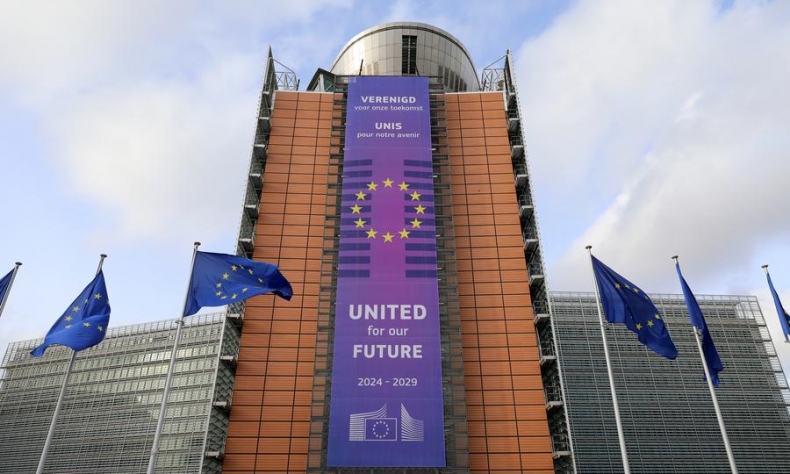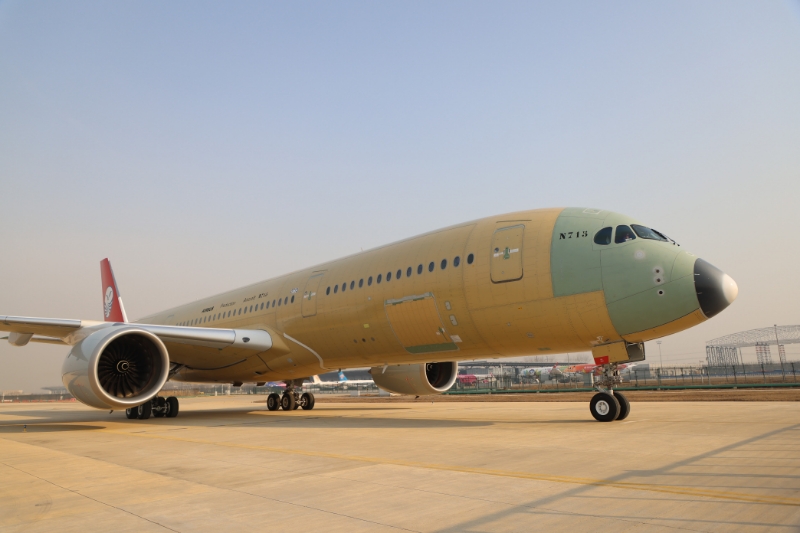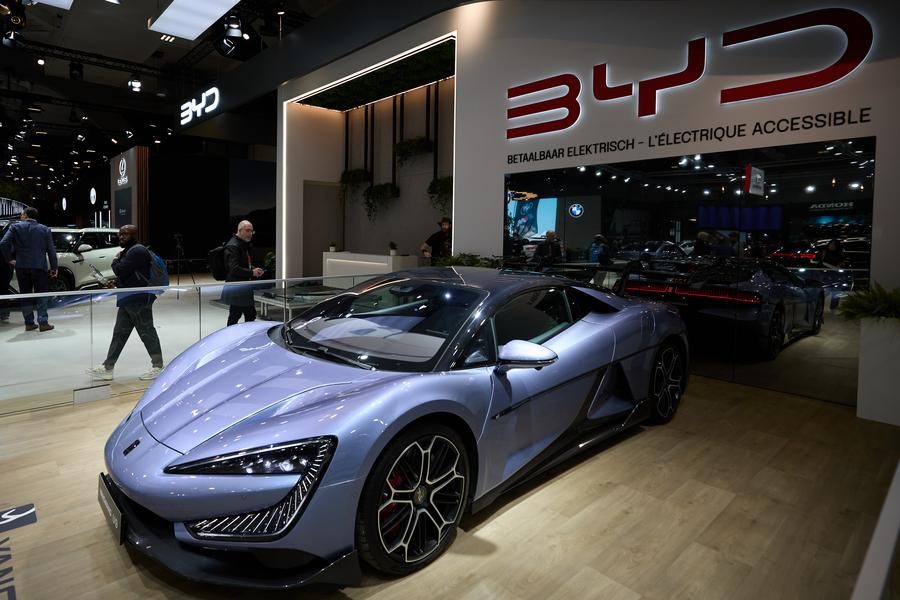China’s Market Is Not an “Option” but a “Must”

China and the EU are now each other’s most critical trade partners, with highly complementary economies and intertwined interests. Businesses from both sides continue to ramp up investments in each other’s markets.
“There is no doubt that the healthy and stable development of China-EU relations over the past 50 years has created enormous value for both sides. This aligns with their fundamental and long-term interests, as well as the shared expectations of the international community,” Jens Eskelund, president of the European Union Chamber of Commerce in China (EUCCC), told China Today in an exclusive interview. According to Eskelund, since China’s accession to the World Trade Organization (WTO) in 2001, commercial ties between China and the EU have seen leapfrog development.
Established in 2000, the EUCCC now boasts over 1,700 member companies, and its growth has mirrored the flourishing trajectory of China-EU economic and trade relations. Recognized by both the European Commission and the Chinese government as the independent official voice of European businesses in China, the Chamber has set up seven branch offices across nine Chinese cities over the past 25 years, serving as a vital bridge connecting markets and communities in China and the EU.
Integrated major economies
Recalling his early days in China, Eskelund said, “When I first arrived in 1998, China was primarily engaged in low-value-added, labor-intensive manufacturing. Today, it has transformed into a leader in high-quality development, technological innovation, and green technology.”
Eskelund’s academic and professional journey in China has allowed him to witness the rapid evolution of China-EU commercial ties firsthand. After studying in Beijing, he worked as a commercial officer at the Embassy of the Kingdom of Denmark. He joined Danish shipping and logistics giant A.P. Moller-Maersk in 2000 and has held various senior management positions of the corporation in China. Currently, he serves as chief representative for Maersk in Greater China and Northeast Asia, while being president of the EUCCC. Over the years, he has seen China’s growing influence in global value chains, marked by its prominent position in high-value-added and technology-intensive industries.
“Compared to 50 years ago, we are in a completely different era,” he said. Back then, China was just beginning to engage with the world. Now, it has become the world’s second-largest economy. In a relatively short span, China has transitioned from isolation to full integration into the global economy. China has also deepened collaboration with EU countries in green energy, smart manufacturing, biopharmaceuticals, artificial intelligence, aerospace, logistics, and shipping.

According to data from China’s Ministry of Commerce, trade between China and the EU has surged from US$2.4 billion to US$780 billion over the past 50 years, while mutual investment has grown from nearly zero to approximately US$260 billion. Meanwhile, the China-Europe Railway Express, with over 100,000 trips completed, has become a “golden corridor” for Asia-Europe trade. Today, the combined GDP of China and the EU accounts for more than one-third of the global total.
Eskelund emphasized that China and the EU are now each other’s most critical trade partners, with highly complementary economies and intertwined interests. Businesses from both sides continue to ramp up investments in each other’s markets.
“Every day, goods worth over €1 billion are transported from China to Europe. Meanwhile, the European business community in China remains very active, with many companies thriving here,” he said. Frequent trade exchanges, he added, deliver immense value and convenience to consumers on both sides.
China’s irreplaceable role in the global supply chain
Amid geopolitical tensions, supply chain disruptions, and unilateral measures such as U.S. tariffs, Eskelund remains confident that China’s central position in global supply and value chains will not change.
“China possesses a world-class manufacturing ecosystem and competitive labor costs. Its supply chains are robust, flexible, and cost-effective,” he said, and added that China and the EU have deeply integrated industrial and supply chains, and there are broad prospects for economic and trade cooperation.
“As we celebrate the 50th anniversary of China-EU diplomatic ties, we must systematically review past achievements while recognizing the vast potential for future growth. Our task is to find the right methods to unlock this potential,” Eskelund said.
He stressed that the world today is vastly different from the one when China joined the WTO 25 years ago. Ensuring fairer distribution of benefits and building mutual trust are urgent priorities. “Both sides must genuinely invest in understanding each other’s legitimate concerns and seek balanced solutions through candid dialogues,” he said.

Eskelund also highlighted positive signals from China’s Central Economic Work Conference held in Beijing last December, which mapped out the plan for economic work in 2025. The conference outlined priorities in nine aspects, including vigorously boosting consumption, improving investment efficiency, and expanding domestic demand on all fronts.
These policies, he noted, will create new opportunities for European businesses in China. “We strongly support China’s efforts to stimulate consumption, which is crucial for balancing supply-demand dynamics and ensuring corporate profitability,” he said.
Pioneering new models for cooperation
Looking ahead to the next decade, Eskelund identified China’s consumption growth as a key trend for observers to keep an eye on. “The continued expansion of Chinese consumption will surely provide significant opportunities for European companies,” he said.
He believes green transition, in particular, offers substantial collaboration potential, and that China and the EU can partner not only in green technology and manufacturing, but also in global regulatory alignment. With China’s commitment to peak carbon emissions by 2030 and reach carbon neutrality by 2060, Chinese firms are showing their leading role in this field – a goal that aligns with the EU’s decarbonization ambitions.
“Large economies like China and the EU must find new ways to cooperate in advancing a sustainable future. There is much we can learn from each other,” he said.
Eskelund also welcomed China’s recent expansion of visa-free entry for citizens of certain countries, a move applauded by European businesses. “This facilitates closer ties between European headquarters and their Chinese operations, and makes traveling to Europe for Chinese more convenient,” he said.
Regarding global trade, Eskelund remains optimistic. Citing the growth rate of global container trade – double that of global economic growth – he said, “The world needs trade. By 2025, the global trade growth rate is expected to continue outpacing overall economic growth.”
Eskelund expressed his strong confidence when looking ahead to the next 50 years of China-EU relations. “Building on our solid foundation, I hope both sides will pioneer new models for cooperation, forging a more resilient partnership,” he concluded.
 Facebook
Facebook
 Twitter
Twitter
 Linkedin
Linkedin
 Google +
Google +










